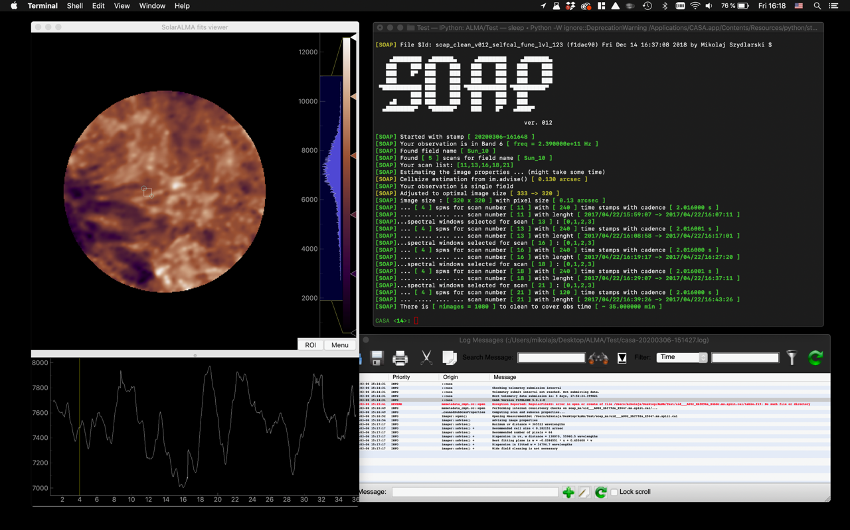His 30 credits master thesis project was done at RoCS in connection with the ESO ALMA Development Study "High-cadence imaging of the Sun” and the SolarALMA project under the supervision of Sven Wedemeyer.
Daniel Jakobsson is originally from Gothenburg, Sweden. For the last few years he has been studying at Luleå University of Technology in Sweden. He started with a one-year preparatory program in technology followed by five years of engineering physics and electrical engineering where his two-year specialization (master) was in computational methods and physics.
Previous experience
Jakobsson work this autumn with RoCS is an extension of the work he did during his master thesis.
As a student I investigated how the Earth’s atmosphere disturbs simulated ALMA observations of the Sun. This disturbance is from Earth’s troposphere and specifically from water vapour.
Water vapour is considered since it is the dominating tropospheric disturbance at ALMA frequencies.
- What is an ALMA?
- ALMA is an interferometric telescope which means it consists of multiple smaller telescopes or antennas that are spread out and used in combination to form one large telescope. The distance between the individual antennas can be up to 16 km when fully complete.
With larger baselines between the antennas, they will experience different atmospheric atmospheres above and distort the signal. With distances of around 16 km it is logical to think of that there might be some differences if one just looks straight up but this is also happening at smaller scales because water vapour tends to be poorly mixed and move in pockets which is different to other parts of the troposphere. These distortions can be minimized with the help of hardware installed at ALMA but they, unfortunately, do not work when studying the Sun.

These effects can also be minimized by studying the target for a longer time and taking the average, but this will remove the interesting dynamic parts of the Sun. This in combination with that the available algorithms are not suitable for reconstructing targets where there are signals all over the image such as the Sun leads to complicated and noisy images.
The goal with my work here at RoCS is to investigate how the image reconstruction of ALMA data can be optimized for the Sun. This is done with running different settings with the software Solar ALMA pipeline (SoAP) which is developed here at RoCS. SoAP is a pipeline that takes ALMA data as input with science ready images as output. If the ALMA data are simulated from a model of the Sun, there is a possibility to study the reconstruction in a closed environment.
Winter wonderland
Daniel Jakobsson has always been interested in skiing and snowboarding and he looks forward to have close access to these activities in the winter from Oslo. - In the summertime there are few places better for relaxing than the cliffs of the Swedish west coast, he says.
His experience so far has with RoCS has only been positive.
Since I have an engineering background and have not worked with anything related to the Sun before I lack some basic knowledge regarding the Sun which has gladly been answered by anyone I have asked,
Jakosson explains. He would like to see more of Norway. - Maybe going to the west coast and experience a storm (on land of course) or going skiing in Jotunheimen, he suggests.
